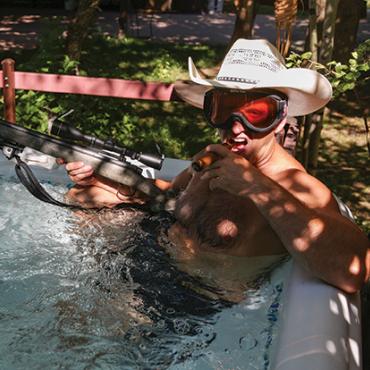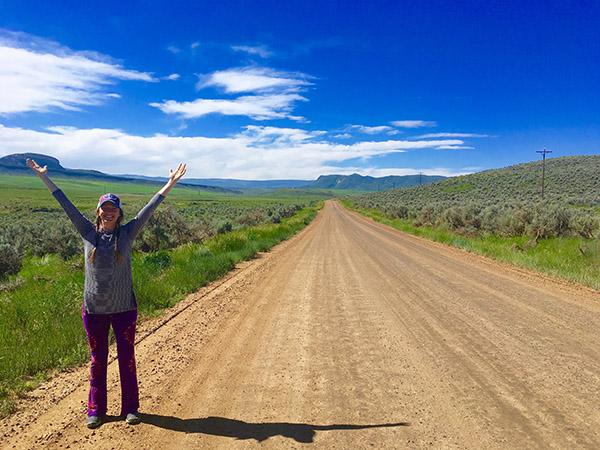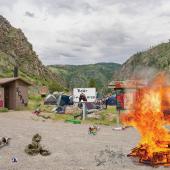The Road Less Traveled
Put the pavement behind you.
Do not go where the path may lead, go instead where there is no path and leave a trail.
–Ralph Waldo Emerson
I’m sitting a few hundred yards above the M, looking at the valley floor through my binoculars. They’re good binos, and they bring the entire valley into crisp, clear perspective. They act as a sort of geographic microscope, yielding layers of detail previously unseen, though I’ve sat in this very spot countless times before.
What the binos reveal today is roadwork. In every direction. From Bear Canyon to Four Corners, Springhill to South Cottonwood, Carhartt-clad road crews dig, dump, grade, steamroll, and pave their way through another 10-hour workday. Orange signs and flags pepper the roadbeds; sweat-covered bodies shuffle to and fro; massive machinery rumbles along, belching plumes of black smoke into the air. Dust rises and swirls in the afternoon breeze.
At first glance, this seems like a good thing. More pavement means safer, more comfortable travel. Easier access to amenities. Less wear and tear on our vehicles. Fewer car washes. More jobs for locals. The list goes on and on.
But pavement also means more expedient travel, and if you ask me, Bozeman’s already starting to move a little too fast as-is. Rushing here and there with unfathomable urgency, more and more southwest Montana drivers seem oblivious to the pace of life around them. With smooth roads and traffic signs laid out so neatly before them, they go into a kind of supersonic autopilot, their minds retreating inward, interrupted only by the occasional ring of their cell phones.
Dirt and gravel roads, however, with all their vertebrae-busting potholes and teeth-rattling washboards, at the very least force us to slow down a little, to take in our surroundings, and in so doing, discover new sights and sounds we might otherwise miss. A red fox trotting along the treeline. A spur road winding up a hidden canyon. A quaint farmhouse nestled in the trees. The friendly wave of a rancher as his truck rumbles past.
However physically uncomfortable they may be, Montana’s dirt roads offer something pavement cannot: an escape from the mainstream, a sojourn from the structure within which we’ve become inadvertently corralled. A kind of cultural border, these rustic roadways expand our boundaries, leading us away from the ordinary and toward new and interesting insights. And with their sparse signage and unannounced obstacles, they keep us sharp and attentive as we drive.
It’s this spirit of boundary expansion that permeates the Summer 2006 issue of Outside Bozeman. We’ve expanded the size and scope of the magazine, and within its record-high 112 pages you’ll find stories about everything from international travel to alternative building practices, oft-eschewed fishing techniques to unorthodox Western artwork, lesser-known elbow injuries to completely new ways of fueling your vehicle before heading out on your next outdoor adventure.
Whatever your outdoor inclinations may be, we encourage you to drive the physical and mental roads less traveled this summer. As always, we hope you’ll do as much of it as possible outside. Fish the rivers, run and bike the trails, boat the rapids, ride a horse, take a stroll through the Yellowstone backcountry, camp out overnight, or scout the backcountry for the upcoming hunting season. Whatever activity you choose, don’t be afraid to leave the pavement behind and strike out on your own. That is, after all, the Montana way; and though it may mean getting a little dirty, riding out a few bumps, or living a little dangerously, you really wouldn’t want it any other way.














